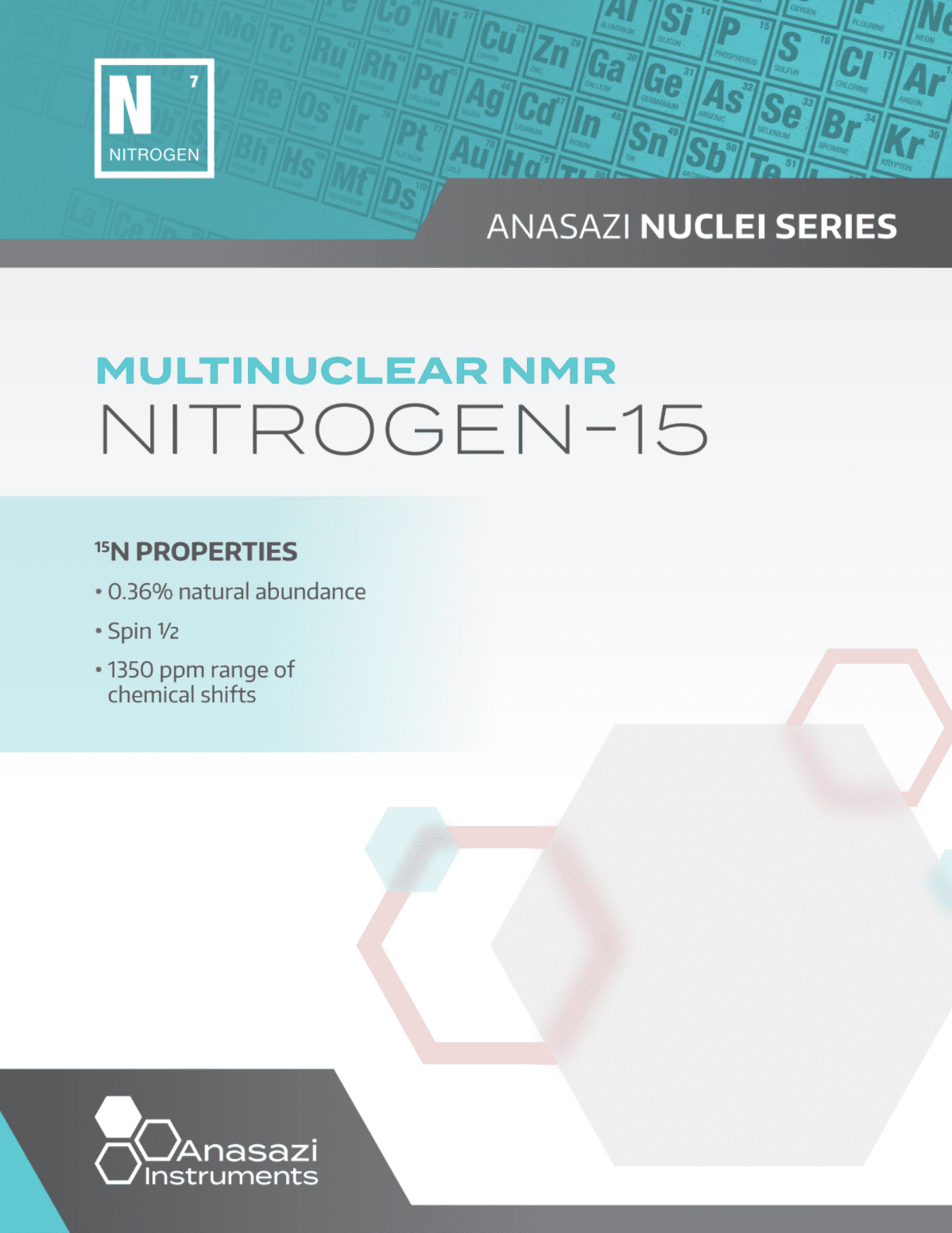Using Nitrogen NMR Spectroscopy To Analyze Compounds
31P
29Si
11B
59Co
15N
Did You Know?
Compounds that are isotopically enriched to 99% nitrogen-15 exhibit 6 times more receptivity than carbon-13 at natural abundance.
NMR spectroscopists enthusiastically study the nitrogen nuclei as it is one of the principal elements of life. Nitrogen NMR uncovers structure and bonding in peptides, DNA, enzymes, and other biomolecules. Nitrogen is interesting outside of biology as it can form a variety of bonds with almost all other elements. Nitrogen also exists in many coordination states, with or without a lone pair of electrons. The nitrogen nuclei exhibits sensitivity to all these variables, as well as concentration, pH, geometric configuration, and more.
If your material contains nitrogen, try exploiting nitrogen NMR as a tool to better understand it— especially if isotopic enrichment is an option.
Recommended Literature
| J. Mason In Encyclopedia of Nuclear Magnetic Resonance, John Wiley & Sons, Inc., Chichester, 1996; Vol. 5, 3222-3251 | G. J. Martin, M. L. Martin, and J.-P. Gouesnard, NMR Basic Principes and Progress, Vol. 18, Springer-Verlag, Berlin, 1981 |
15N Properties
- 0.36% natural abandance
- Spin 1/2
- Chemical shift range of 1350 ppm
- Receptivity 2.19 × 10-2
- Gyromagnetic ratio -4.316 MHzT-1
- Reference standard H3PO4
- Freq EFT-90: 9.124 MHz

Nuclei Series Download
To download a copy of Nitrogen-15 for your use and reference click on the download PDF link below.
